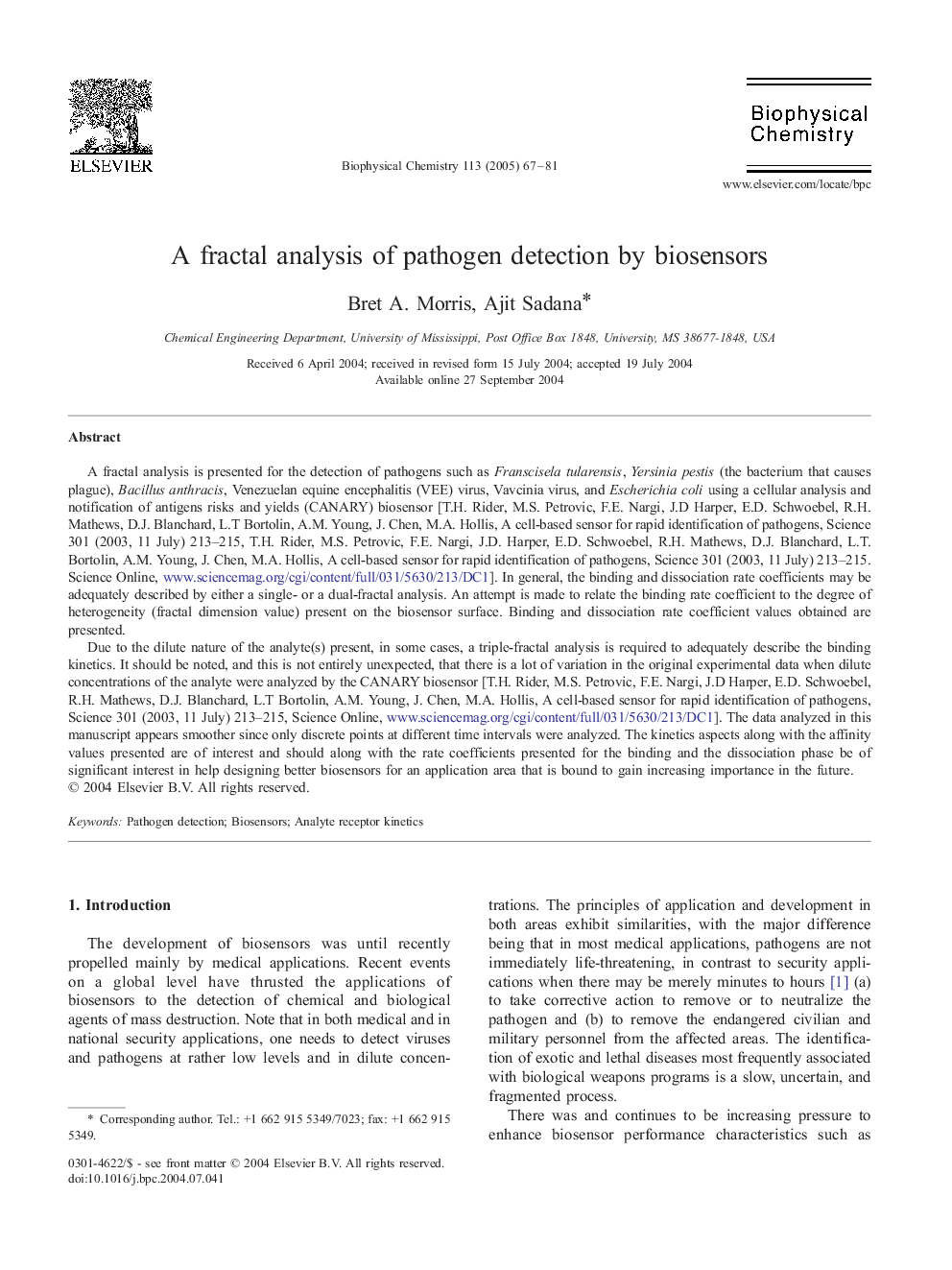| Article ID | Journal | Published Year | Pages | File Type |
|---|---|---|---|---|
| 9573308 | Biophysical Chemistry | 2005 | 15 Pages |
Abstract
Due to the dilute nature of the analyte(s) present, in some cases, a triple-fractal analysis is required to adequately describe the binding kinetics. It should be noted, and this is not entirely unexpected, that there is a lot of variation in the original experimental data when dilute concentrations of the analyte were analyzed by the CANARY biosensor [T.H. Rider, M.S. Petrovic, F.E. Nargi, J.D Harper, E.D. Schwoebel, R.H. Mathews, D.J. Blanchard, L.T Bortolin, A.M. Young, J. Chen, M.A. Hollis, A cell-based sensor for rapid identification of pathogens, Science 301 (2003, 11 July) 213-215, Science Online, www.sciencemag.org/cgi/content/full/031/5630/213/DC1]. The data analyzed in this manuscript appears smoother since only discrete points at different time intervals were analyzed. The kinetics aspects along with the affinity values presented are of interest and should along with the rate coefficients presented for the binding and the dissociation phase be of significant interest in help designing better biosensors for an application area that is bound to gain increasing importance in the future.
Keywords
Related Topics
Physical Sciences and Engineering
Chemistry
Physical and Theoretical Chemistry
Authors
Bret A. Morris, Ajit Sadana,
